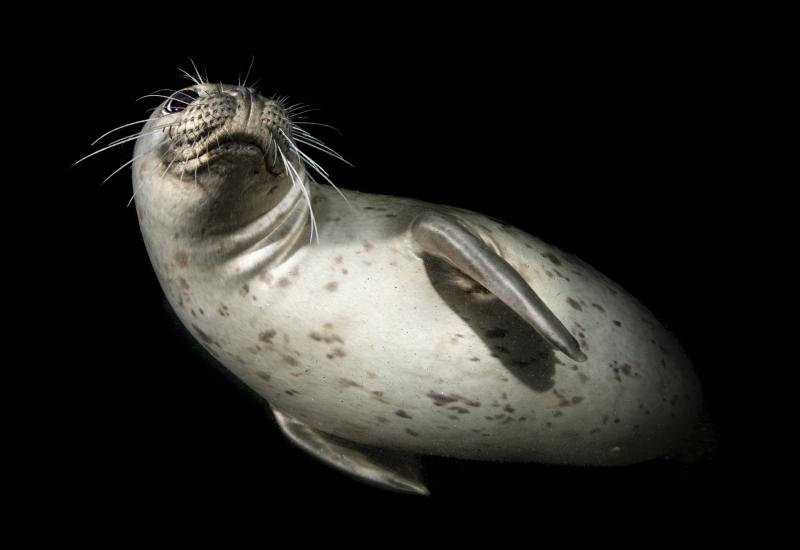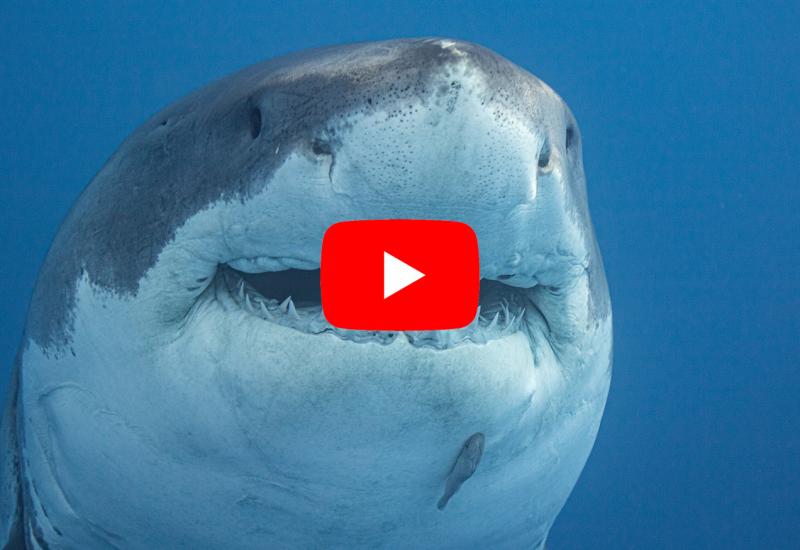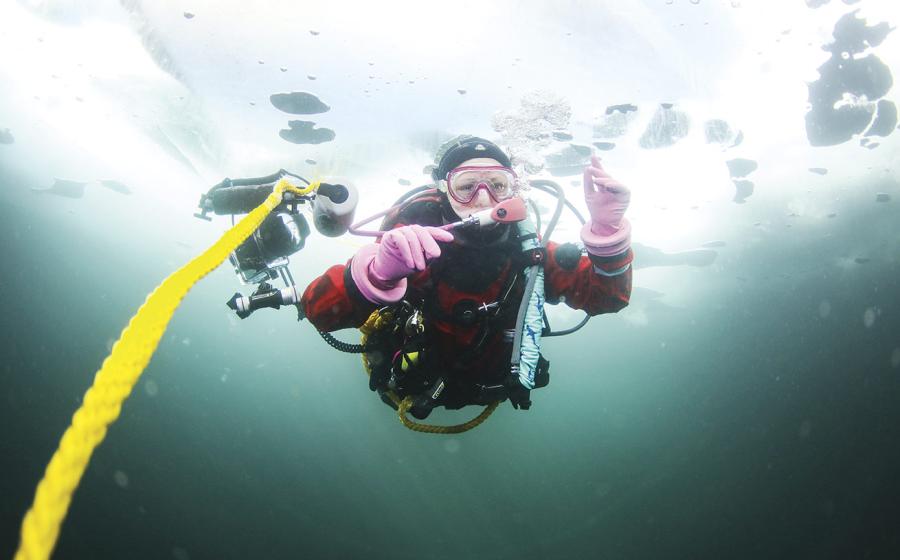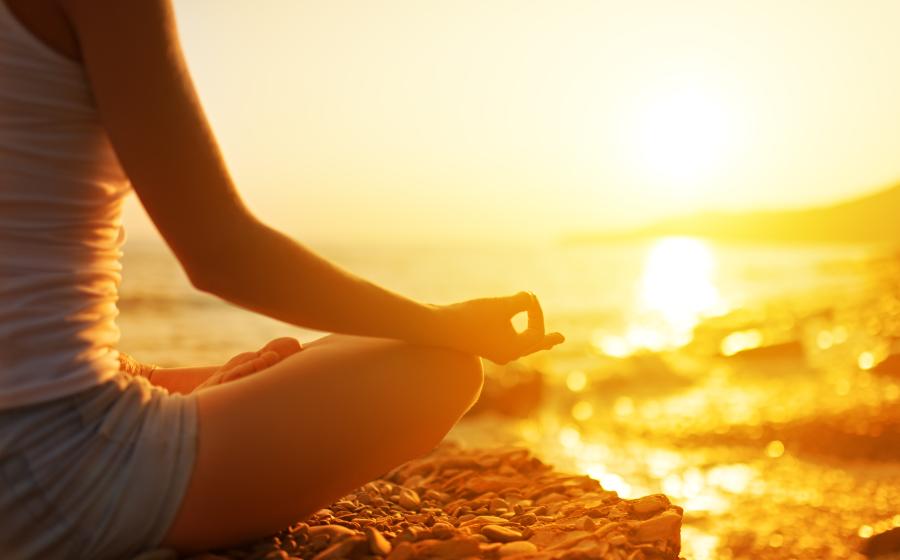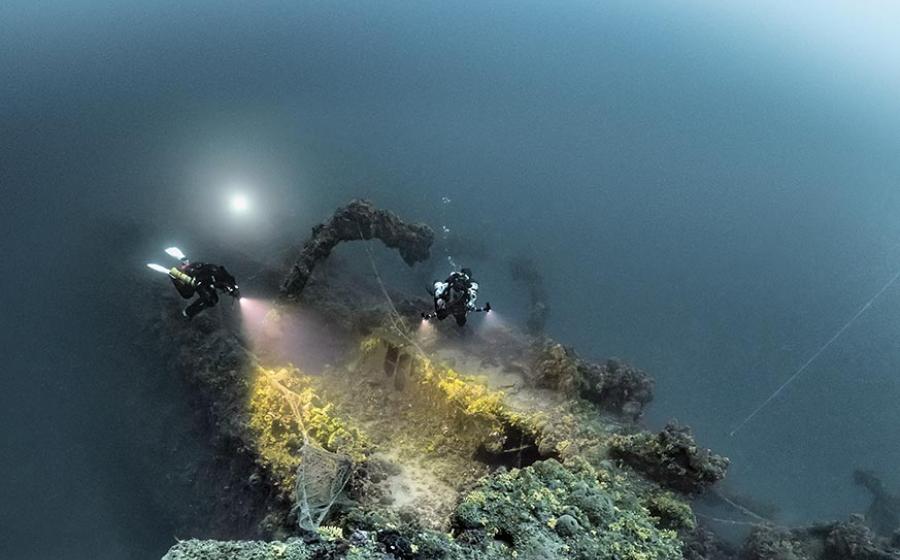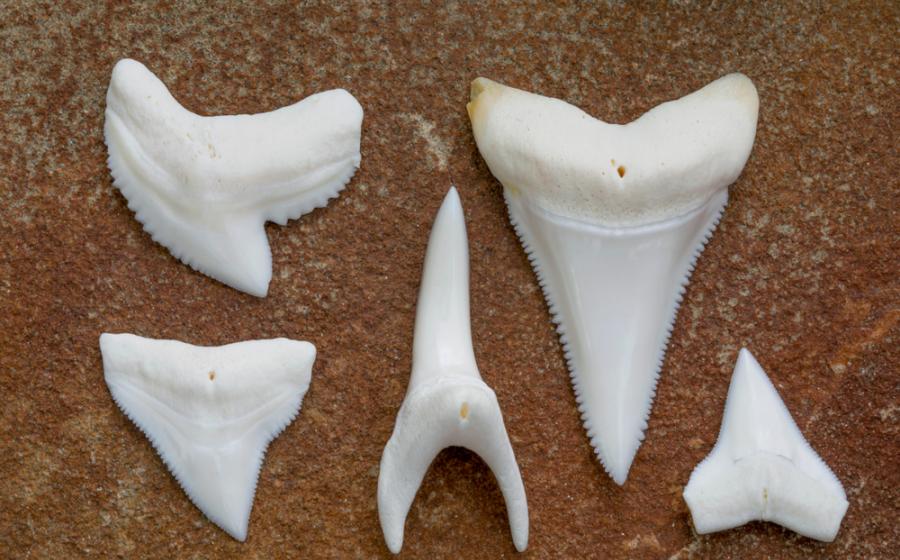Cold-Water Diving in California's Carmel Bay Is Red-Hot
From the links at Pebble Beach to the views along 17-Mile Drive, Carmel Bay encompasses some of the Golden State’s most iconic Pacific Coast scenery. This beautiful stretch of central California plays host to many well known events such as the AT&T Pebble Beach Pro Am Golf Tournament, the Carmel Bach Festival and the decadent Concours d’Elegance auto events. What most people don’t realize though is that Carmel Bay is also the site of world-class diving.
Carmel Bay is just south of its famous diving neighbor, Monterey Bay, the location of the Monterey Submarine Canyon. Cold, nutrient-rich water upwelling from the Carmel Trench — part of the Monterey Submarine Canyon system — feeds lush kelp forests and colorful bottom life in both bays. Of the two, Carmel Bay is more exposed to the open sea, resulting in more-dramatic topography and a greater abundance of marine life. Its relatively unprotected nature means divers must be aware of local conditions and hazards.
There are many shore-diving opportunities, with the most popular a short drive south of the affluent seaside community of Carmel. One of the best sites — and most pristine due to a diver reservation system — is the underwater reserve in the Point Lobos State Natural Reserve.
Point Lobos was referred to by landscape artist Francis McComas as “the greatest meeting of land and water in the world.” McComas wasn’t exaggerating. The reserve is laced by more than seven miles of walking trails through forests and along the shore. The scope and beauty of the topside scenery is surpassed only by the underwater spectacle. The waters of Point Lobos Reserve are home to numerous sea lions, harbor seals, otters and marine birds.
Whalers Cove, where divers enter the reserve, is relatively shallow and in summer is overlaid with a dense growth of kelp. A favorite dive is Middle Reef, comprised of a long pile of large and small boulders that runs up the middle and out the mouth of the cove. Middle Reef is separated from the cove wall by a sand channel, which is relatively clear of kelp and can be seen from the lookout point on the hill above Cannery Point. Divers typically surface-swim up the sand channel until the parking lot is out of view, and drop down to the reef on either side, weaving around and over boulder piles and past miniwalls through small channels that direct the nutrient-rich water over the living scenery. Countless small overhangs and minicaves form the homes of little communities.
And yes, there are fish. California’s temperate-water fish species are often cryptic, favoring camouflage over speed as a defense. But once you know where to look, it’s easy to find rockfish pretending to be part of the kelp or greenlings hiding among the rocks. Bring a good light, as the dark water under the kelp hides the brilliant colors of the encrusting sponges, anemones, nudibranchs and ther invertebrates competing for space under the overhangs and in the cul-desacs that are found all over Middle Reef.
Another popular shore dive is Cannery Point, dived by following the edge of the cove near the parking lot. It doesn’t take long for divers to reach depths of 65 to 80 feet. Along with thick kelp forests, Cannery Point features a wall covered with large, colorful anemones and carpets of smaller strawberry anemones and orange-cup corals. Cobalt-blue and deepred sponges plaster sections of the rocks.
Some of the most spectacular diving at Point Lobos is accessible only to boat divers or to those using underwater scooters. Just to the other side of Cannery Point from Whalers Cove is Bluefish Cove, an area that bursts with marine life and wonderful topography. Not far outside the coves are deep pinnacles favored by local tec divers. Capt. Phil Sammet launches an inflatable boat at Whalers Cove, and takes out four to five divers at a time.
Just north of the Point Lobos Nature Reserve on Highway 1 is one of the best known sites on Carmel Bay. Shown on maps and signs as Carmel River State Beach, it’s better known as Monastery Beach, a beautiful but dangerous dive spot that has also earned the alternate nickname Mortuary Beach. The diving at Monastery is among the best shore dives in the country. On a calm day it’s a relatively easy dive, but conditions can change quickly, and it’s important to dive with someone familiar with the site.
Monastery should also be dived only on calm days. The steep drop-off beneath the breaking waves and the slippery pea gravel of the beach make for a dangerous combination with even small waves; in big waves, it’s life threatening. The payoff for making the challenging entry is an amazing dive. Monastery is the closest beach to the Carmel Trench; the cold water coming up from the trench brings good visibility and abundant life. Not far off the north end of the beach is a dense kelp forest over a rocky bottom. Bright-red orange-cup corals and larger anemones cover the rocks. Thick stands of kelp in late summer can make it a virtual overhead environment. The most spectacular dive at Monastery also starts at the north end of the beach.
Itinerary
Day 1 - Arrive in the Carmel area Thursday evening and check in at the Lamp Lighter Inn & Sunset Hotel Suites (carmellamplighter.com). After dinner at one of the central coast’s most popular restaurants, Dametra Café, head to the local market to stock up on supplies for a picnic lunch on Friday.
Day 2 - Arrive at Point Lobos State Reserve when the gates open at 8 a.m. Drive to the Whalers Cove parking lot, find a lot closest to the entry/exit point, and set up for the day. Make a first dive at Middle Reef, then a second dive at Cannery Point. Walk the reserve trails. (Be aware of the abundant poison oak.) If you have the energy, check out Carmel’s Wine Walk By-the-Sea (carmelcalifornia.org/hingsto-do) before heading home for a rest.
Day 3 - If conditions are favorable, drive south to Monastery Beach. After two dives here, head north to the world famous Monterey Bay Aquarium (montereybayaquarium.org) or south to the beautiful Big Sur Coast. Make reservations at Nepenthe Restaurant (nepenthebigsur.com), south of Carmel. Founded in 1949, Nepenthe offers a great ambrosia burger and fantastic views.
Need to Know
- When to Go - Year-round; Carmel waters are coldest in spring and warmest late August to October, which is when diving conditions are consistently best.
- Dive Conditions - Because conditions can be challenging, dive only with someone who knows these sites well or with one of the local dive shops. Water temps can range from high 40s to mid-50s; visibility varies dramatically.
- Operators - Capt. Phil Sammet (underwatercompany.com) can take up to five people to Bluefish Cove and the pinnacles of Point Lobos. A charter trip costs $250 midweek ($50 per person). A two-tank guided tour of sites like Monastery with Aquarius Dive Shop (aquariusdivers.com) is $85 for one person, $150 for two.
- Tip - If you plan to dive Point Lobos (pointlobos.org) on a summer weekend, make reservations well in advance. Bring your C-card and adhere to the reserve’s guidelines closely.
From the links at Pebble Beach to the views along 17-Mile Drive, Carmel Bay encompasses some of the Golden State’s most iconic Pacific Coast scenery. This beautiful stretch of central California plays host to many well known events such as the AT&T Pebble Beach Pro Am Golf Tournament, the Carmel Bach Festival and the decadent Concours d’Elegance auto events. What most people don’t realize though is that Carmel Bay is also the site of world-class diving.
Carmel Bay is just south of its famous diving neighbor, Monterey Bay, the location of the Monterey Submarine Canyon. Cold, nutrient-rich water upwelling from the Carmel Trench — part of the Monterey Submarine Canyon system — feeds lush kelp forests and colorful bottom life in both bays. Of the two, Carmel Bay is more exposed to the open sea, resulting in more-dramatic topography and a greater abundance of marine life. Its relatively unprotected nature means divers must be aware of local conditions and hazards.
There are many shore-diving opportunities, with the most popular a short drive south of the affluent seaside community of Carmel. One of the best sites — and most pristine due to a diver reservation system — is the underwater reserve in the Point Lobos State Natural Reserve.
Point Lobos was referred to by landscape artist Francis McComas as “the greatest meeting of land and water in the world.” McComas wasn’t exaggerating. The reserve is laced by more than seven miles of walking trails through forests and along the shore. The scope and beauty of the topside scenery is surpassed only by the underwater spectacle. The waters of Point Lobos Reserve are home to numerous sea lions, harbor seals, otters and marine birds.
Whalers Cove, where divers enter the reserve, is relatively shallow and in summer is overlaid with a dense growth of kelp. A favorite dive is Middle Reef, comprised of a long pile of large and small boulders that runs up the middle and out the mouth of the cove. Middle Reef is separated from the cove wall by a sand channel, which is relatively clear of kelp and can be seen from the lookout point on the hill above Cannery Point. Divers typically surface-swim up the sand channel until the parking lot is out of view, and drop down to the reef on either side, weaving around and over boulder piles and past miniwalls through small channels that direct the nutrient-rich water over the living scenery. Countless small overhangs and minicaves form the homes of little communities.
And yes, there are fish. California’s temperate-water fish species are often cryptic, favoring camouflage over speed as a defense. But once you know where to look, it’s easy to find rockfish pretending to be part of the kelp or greenlings hiding among the rocks. Bring a good light, as the dark water under the kelp hides the brilliant colors of the encrusting sponges, anemones, nudibranchs and ther invertebrates competing for space under the overhangs and in the cul-desacs that are found all over Middle Reef.
Another popular shore dive is Cannery Point, dived by following the edge of the cove near the parking lot. It doesn’t take long for divers to reach depths of 65 to 80 feet. Along with thick kelp forests, Cannery Point features a wall covered with large, colorful anemones and carpets of smaller strawberry anemones and orange-cup corals. Cobalt-blue and deepred sponges plaster sections of the rocks.

Some of the most spectacular diving at Point Lobos is accessible only to boat divers or to those using underwater scooters. Just to the other side of Cannery Point from Whalers Cove is Bluefish Cove, an area that bursts with marine life and wonderful topography. Not far outside the coves are deep pinnacles favored by local tec divers. Capt. Phil Sammet launches an inflatable boat at Whalers Cove, and takes out four to five divers at a time.
Just north of the Point Lobos Nature Reserve on Highway 1 is one of the best known sites on Carmel Bay. Shown on maps and signs as Carmel River State Beach, it’s better known as Monastery Beach, a beautiful but dangerous dive spot that has also earned the alternate nickname Mortuary Beach. The diving at Monastery is among the best shore dives in the country. On a calm day it’s a relatively easy dive, but conditions can change quickly, and it’s important to dive with someone familiar with the site.
Monastery should also be dived only on calm days. The steep drop-off beneath the breaking waves and the slippery pea gravel of the beach make for a dangerous combination with even small waves; in big waves, it’s life threatening. The payoff for making the challenging entry is an amazing dive. Monastery is the closest beach to the Carmel Trench; the cold water coming up from the trench brings good visibility and abundant life. Not far off the north end of the beach is a dense kelp forest over a rocky bottom. Bright-red orange-cup corals and larger anemones cover the rocks. Thick stands of kelp in late summer can make it a virtual overhead environment. The most spectacular dive at Monastery also starts at the north end of the beach.
Itinerary

Day 1 - Arrive in the Carmel area Thursday evening and check in at the Lamp Lighter Inn & Sunset Hotel Suites (carmellamplighter.com). After dinner at one of the central coast’s most popular restaurants, Dametra Café, head to the local market to stock up on supplies for a picnic lunch on Friday.
Day 2 - Arrive at Point Lobos State Reserve when the gates open at 8 a.m. Drive to the Whalers Cove parking lot, find a lot closest to the entry/exit point, and set up for the day. Make a first dive at Middle Reef, then a second dive at Cannery Point. Walk the reserve trails. (Be aware of the abundant poison oak.) If you have the energy, check out Carmel’s Wine Walk By-the-Sea (carmelcalifornia.org/hingsto-do) before heading home for a rest.
Day 3 - If conditions are favorable, drive south to Monastery Beach. After two dives here, head north to the world famous Monterey Bay Aquarium (montereybayaquarium.org) or south to the beautiful Big Sur Coast. Make reservations at Nepenthe Restaurant (nepenthebigsur.com), south of Carmel. Founded in 1949, Nepenthe offers a great ambrosia burger and fantastic views.
Need to Know
- When to Go - Year-round; Carmel waters are coldest in spring and warmest late August to October, which is when diving conditions are consistently best.
- Dive Conditions - Because conditions can be challenging, dive only with someone who knows these sites well or with one of the local dive shops. Water temps can range from high 40s to mid-50s; visibility varies dramatically.
- Operators - Capt. Phil Sammet (underwatercompany.com) can take up to five people to Bluefish Cove and the pinnacles of Point Lobos. A charter trip costs $250 midweek ($50 per person). A two-tank guided tour of sites like Monastery with Aquarius Dive Shop (aquariusdivers.com) is $85 for one person, $150 for two.
- Tip - If you plan to dive Point Lobos (pointlobos.org) on a summer weekend, make reservations well in advance. Bring your C-card and adhere to the reserve’s guidelines closely.

